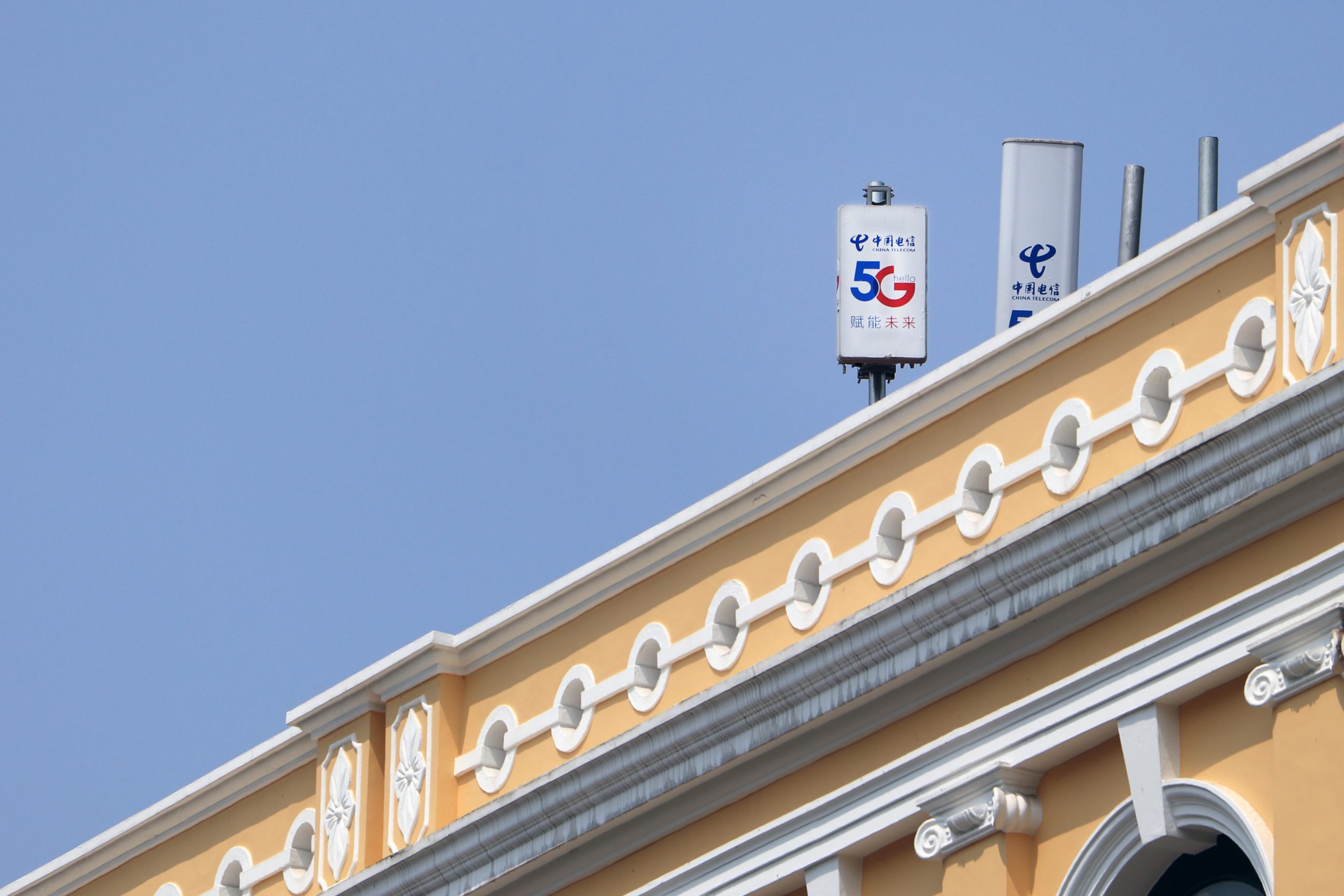
The start of 2020 was an exciting time for the telecommunications industry, filled with new opportunities. The advent of 5G technology meant there were chances to develop the next ‘killer app’, with Gartner predicting that worldwide 5G network infrastructure revenues will reach $4.2 billion in 2020, marking year-over-year growth of 89 per cent.
Of course, these predictions were made before the global COVID-19 pandemic that has affected every industry, without exception. While nobody is suggesting huge telecoms companies are in danger of going out of business, how they conduct their business will certainly be affected.
The rapid-growth plans for rolling out 5G will almost certainly see some slowdown. The unforeseen spike in demand due to remote work and education protocols could lead to a temporary suspension of data caps that could, in turn, mean a slight degradation in service quality.
How the telecom industry deals with these issues will largely be determined by the companies on this list – the world’s ten largest telecommunication companies.
10. Vodafone

Country of Origin: UK
Revenue: $50.56 billion
Number of Employees: 98,996
Founded in 1991 and headquartered in London, Vodaphone is a British telecom company that operates directly in 25 countries, has partner networks in another 43 countries, provides IP-VPN in 74 countries and has a 4G roaming presence in 168 countries. Vodaphone is among the top five internet providers globally and one of the largest operators of submarine cables. Its primary region of operations includes Asia, Africa, Europe and Oceania.
Vodafone mainly offers fixed-line telephone, mobile phone, broadband, digital television and internet television services. Although its predominant market is residential customers, the company also provides telecommunications and IT services to corporate clients in 150 countries. In addition, it boasts more than 50 million subscribers to its My Vodaphone app.
9. China Telecom

Country of Origin: China
Revenue: $53.15 billion
Number of Employees: 287,076
Beijing-based China Telecom provides fixed-line telephone services, mobile telephone services, internet access and digital television to most of mainland China. By 2019, it had amassed 336 million mobile subscribers, 153 million wireline broadband subscribers and 111 million in-service access lines. China Telecom trades on The Stock Exchange of Hong Kong Limited as well as the New York Stock Exchange.
As part of its latest strategy, China Telecom has invested heavily in staying ahead of the internet of things (IoT) curve. This includes establishing strategic tech companies for vertical industries (smart cities, industrial internet, telemedicine, etc.), as well as cloud computing and AI opportunities.
8. América Móvil

Country of Origin: Mexico
Revenue: $53.45 billion
Number of Employees: 189,448
América Móvil is a Mexico City-based telecom that provides fixed-line, mobile phone, broadband, digital television, IPTV, digital media and IoT services to the Americas and Europe. As of 2019, it had 277.4 million wireless subscribers and 84.3 million subscribers of either fixed voice, fixed data or pay-TV services.
América Móvil’s Mexican subsidiary Telcel has a claim to fame as being the largest mobile operator in the country, with an astounding 70 per cent market share. In the US, the company has established a strong foothold in the prepaid wireless market, where it operates brands such as TracFone, NET10 Wireless, Straight Talk, SIMPLE Mobile, Total Wireless, Telcel América and Page Plus Cellular.
7. Telefonica

Country of Origin: Spain
Revenue: $54.38 billion
Number of Employees: 120,138
Telefonica is a Spanish multinational telecommunications company with a history that dates back nearly a century. It was founded in Madrid in 1924 and is still headquartered there today. Telefónica España is the leading telecommunications company in Spain for mobile, data, television and internet access.
Globally, the company has 344 million clients throughout Mexico, Central America, South America, Spain, the UK and Germany. This includes 261 million mobile phone users, 21 million internet and data users, and 8.1 million pay-TV subscribers.
Telefónica España is a 100% listed company with more than 1.3 million shareholders and traded in several of the most important stock markets around the world.
6. SoftBank

Country of Origin: Japan
Revenue: $86.51 billion
Number of Employees: 37,821
SoftBank is a Japanese multinational conglomerate that has been headquartered in Tokyo since its founding in 1981. Beyond mobile telecommunications, SoftBank is involved in IoT, AI, robotics, semiconductors and e-commerce.
SoftBank’s presence on this list is mainly due to a strategic partnership with another company already mentioned: in 2005, it struck a deal to acquire Vodaphone’s mobile unit in Japan for $15 billion, part of which included a commitment to build the 3G broadband infrastructure needed to bring smartphones to the country.
SoftBank founder and CEO Masayoshi Son later cited that deal as enabling the company to accelerate its efforts drastically.
5. Deutsche Telekom

Country of Origin:Germany
Revenue: $90.41 billion
Number of Employees: 216,000
Deutsche Telekom is a Bonn-based telecommunications company celebrating its silver anniversary in 2020. It has operations worldwide in the areas of fixed-line, mobile phone, broadband, digital television, digital media, IT services and networking solutions.
Deutsche Telekom’s global reach includes subsidiaries in Slovakia, Hungary, North Macedonia, Croatia and Montenegro. Through its international wholesale arm Deutsche Telekom Global Carrier, the company has made inroads in the aviation industry, developing a hybrid network that allows for faster internet access on planes in Europe.
4. Comcast

Country of Origin: US
Revenue: $109 billion
Number of Employees: 190,000
Best known as one of the world’s leading cable TV providers, Philadelphia-based Comcast entered the mobile phone space when it launched Xfinity Mobile in 2017. Rather than erecting its own cell towers, the company decided to simply use those already in place for some of the other major players in the field. As a result, it combines America’s largest and most reliable LTE network with 19 million Xfinity Wi-Fi hotspots.
Comcast’s strategy involves trying to get existing cable and internet customers to use its mobile phone services as well. Currently, Xfinity Mobile is available only to Comcast subscribers who already have an existing Xfinity internet account.
3. Nippon Telegraph and Telephone (NT&T)

Country of Origin: Japan
Revenue: $110.46 billion
Number of Employees: 310,000
Nippon Telegraph and Telephone (NT&T) is a Japanese telecommunications conglomerate headquartered in Tokyo. It was founded in 1952 as a government monopoly but transitioned to a publicly traded company in 1985. NT&T offers fixed-line telephone services, mobile telephone services, internet access, digital television, and IT and network services across Japan.
2019 marked the third consecutive fiscal year of revenue growth for NT&T, with new record-high revenues. That year, operating revenues increased by JPY19.6 billion, representing a 0.2 per cent increase over the same period in the previous fiscal year.
2. Verizon Wireless

Country of Origin: US
Revenue: $131.87 billion
Number of Employees: 135,400
Verizon is one of the elite players in the telecommunications space, with annual revenue of more than $130 billion in 2019. The New Jersey-based company is perhaps best known for its ubiquitous “Can you hear me now?” advertising campaign, which ran between 2002 and 2011.
Verizon offers a national 4G LTE network covering about 98 per cent of the US population in 450 cities; in 2018, it was estimated to provide services to 154 million subscribers.
1. AT&T

Country of Origin: US
Revenue: $181.2 billion
Number of Employees: 247,800
It should come as no surprise that the top spot on this list is held by the best-known brand name in the industry. Telcoms giant AT&T leads the way with more than $180 billion in revenue in 2019. Headquartered in Dallas in the US, the company can trace its roots right back to the inventor of the telephone, Alexander Graham Bell – it started out as the Southwestern Bell Telephone Company, a subsidiary of the Bell Telephone Company.
As of June 2020, AT&T’s 5G network covers 179 million people in 355 markets across the US. The company boasts the fastest and most reliable wireless network in the country and has now also expanded into Mexico.









